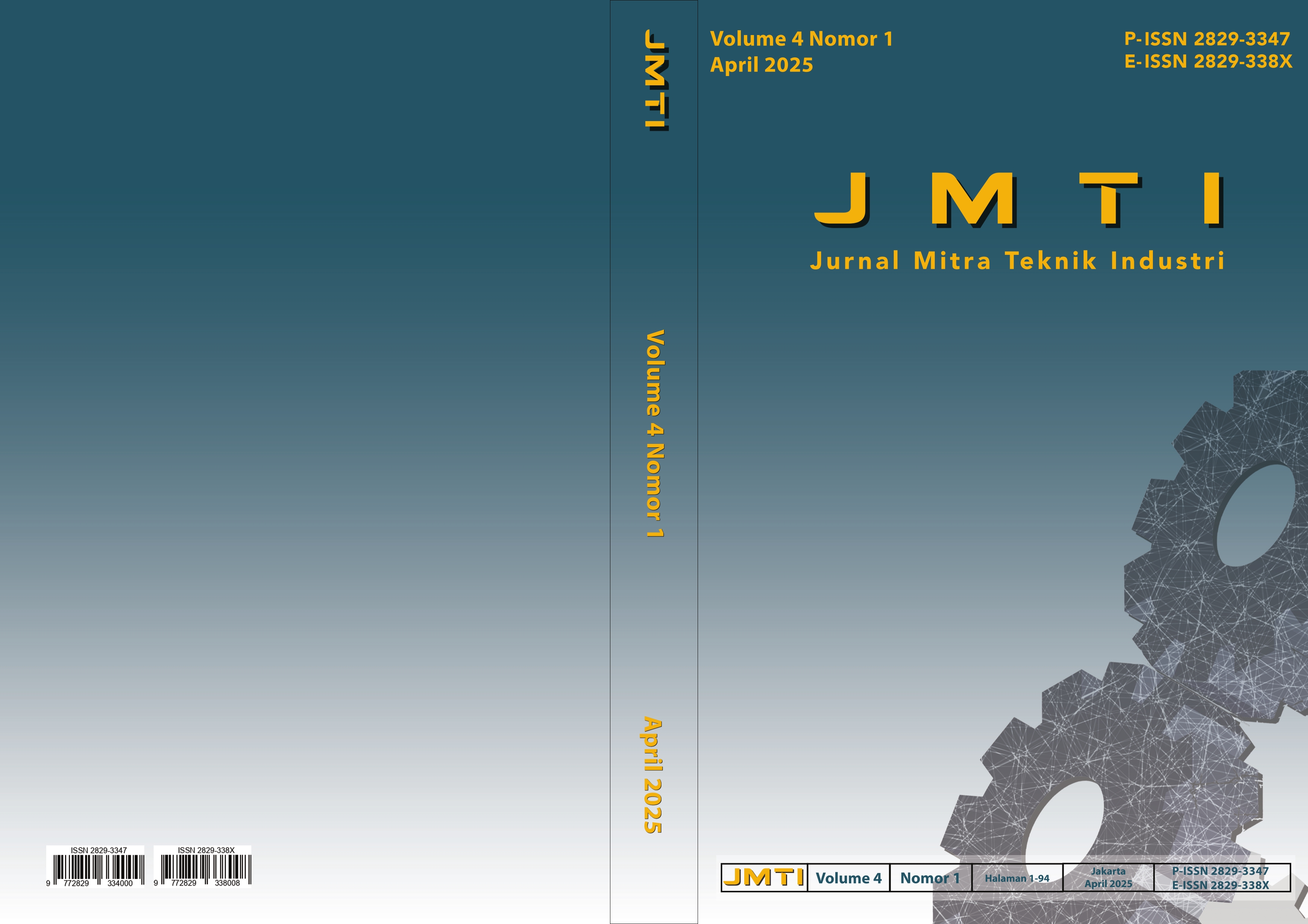PENERAPAN METODE GREEN SCOR DALAM MENINGKATKAN KINERJA GREEN SUPPLY CHAIN MANAGEMENT DI PERUSAHAAN FARMASI
Main Article Content
Abstract
The pharmaceutical industry has a significant impact on the environment, including air, soil, and water pollution caused by production waste. In an effort to address this issue, the implementation of Green Supply Chain Management (GSCM) has become a strategic and effective approach to improve operational efficiency while minimizing environmental impact. This study aims to evaluate the performance of Green Supply Chain Management (GSCM) in a pharmaceutical company using the Green Supply Chain Operations Reference (Green SCOR) approach. The Green SCOR framework includes five main elements: Plan, Source, Make, Deliver, and Return. This research uses a descriptive quantitative approach with primary data obtained through interviews, discussions, and questionnaires with relevant managers, as well as secondary data from company documentation. The evaluation results show that out of 30 performance indicators measured, 11 did not meet company standards, including raw material planning accuracy, material efficiency, transportation emissions, and recycling rates of solid and liquid waste. Therefore, a comprehensive evaluation was conducted by categorizing the findings into four dimensions: planning, production, distribution, and waste management. This study recommends the implementation of integrated systems, advancement of production technology, optimization of logistics, and strengthening of waste management systems to sustainably improve the performance of Green Supply Chain Management (GSCM).
Article Details

This work is licensed under a Creative Commons Attribution-NonCommercial-ShareAlike 4.0 International License.
References
[1] R.A. Dewi, “Analisis Kinerja Supply Chain Management dengan Pendekatan SCOR (Supply Chain Operations Reference) di PT. Perkebunan Nusantara VII Unit Usaha Rejosari,” Skripsi, Universitas Muhammadiyah Yogyakarta, 2018.
[2] Q. Zhu and J. Sarkis, “Relationships Between Operational Practices and Performance Among Early Adopters of Green Supply Chain Management Practices in Chinese Manufacturing Enterprises,” Journal of Operations Management, vol. 22, no. 3, pp. 265- 289, 2004.
[3] S. Arifin and H. Suharto, “Pengaruh Supply Chain Management Terhadap Keunggulan Bersaing dan Kinerja Perusahaan,” Jurnal Kajian Ilmiah dan Ilmu Keuangan (JKII), vol. 2, no. 1, pp. 67-69, 2022.
[4] S.K. Srivastava, “Green Supply Chain Management: A State of The Art Literature Review,” International Journal of Management Reviews, vol. 9, no. 1, pp. 53-80, 2007.
[5] R.B. Handayani, “Analisis Kinerja Supply Chain Management pada Industri Farmasi di Indonesia,” Jurnal Manajemen dan Bisnis Indonesia, vol. 6, no. 1, pp. 45-56, 2021.
[6] R. Widyaningsih, A.S. Wibowo, dan H. Kurniawan, “Evaluasi Dampak Limbah Farmasi Terhadap Lingkungan dan Strategi Pengelolaannya di Indonesia,” Jurnal Teknologi Lingkungan, vol. 19, no. 2, pp. 85-94, 2022.
[7] D. Parmenter, Key Performance Indicators: Developing, Implementing, and Using winning KPIs, 3rd ed. Hoboken, NJ: John Wiley & Sons, 2015.
[8] J. Sarkis, “A Boundaries and Flows Perspective of Green Supply Chain Management,” Supply Chain Management: An International Journal, vol. 17, no. 2, pp. 202-216, 2012.
[9] L. De Boer, E. Labro, and P. Morlacchi, “A Review of Methods Supporting Supplier Selection,” European Journal of Purchasing & Supply Management, vol. 7, no. 2, pp. 75- 89, 2001.
[10] H.S. Shih, H.J. Shyur, and E.S. Lee, “An Extenstion of TOPSIS for Group Decision Making,” Mathematical and Computer Modelling, vol. 45, no. 7-8, pp265- 289, 2004.



